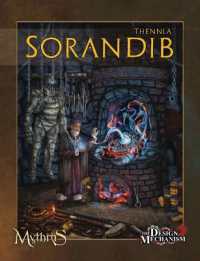- ホーム
- > 洋書
- > 英文書
- > Cinema / Film
Full Description
The site of cinema is on the move. The extent to which technologically mediated sounds and images continue to be experienced as cinematic today is largely dependent on the intensified sense of being 'here,' 'now' and 'me' that they convey. This intensification is fundamentally rooted in the cinematic's potential to intensify our experience of time, to convey time's thickening, of which the sense of place, and a sense of self-presence are the correlatives. In this study, Pepita Hesselberth traces this thickening of time across four different spatio-temporal configurations of the cinematic: a multi-media exhibition featuring the work of Andy Warhol (1928-1987); the handheld aesthetics of European art-house films; a large-scale media installation by Rafael Lozano-Hemmer; and the usage of the trope of the flash-forward in mainstream Hollywood cinema. Only by juxtaposing these cases by looking at what they have in common, this study argues, can we grasp the complexity of the changes that the cinematic is currently undergoing.
Contents
Acknowledgements
List of Illustrations
Introduction
The Site of Cinema
Cinematic Time
Deixis
Flashing Forward
HERE - Locating the Cinematic
Expanded Cinema: Proliferating Screens
It's About Time (Or Is It?): Situating
Other Rooms: Re-scaling
Outer and Inner Space: Expanding
Locating the Cinematic: Here
NOW - Navigating Cinematic Time
Handheld Histories: Authenticity, Reflexivity, Corporeality
Authentic Encounters: Zusje (Little Sister)
Affective Encounters: Rosetta
Traumatic Encounters: Idioterne (The Idiots)
Navigating Cinematic Time: Now
Me - Situating Cinematic Presence
3D and the Demise of the Euclidian Subject
Projection: From Subject-Effect to Presence-Effect
Presence and the Temporality of the Event
The Experience of Agency
Situating Cinematic Presence: Me
Coda - Flash Forward
Notes
Filmography
Bibliography
Index







